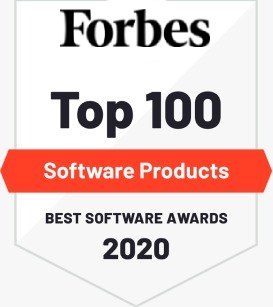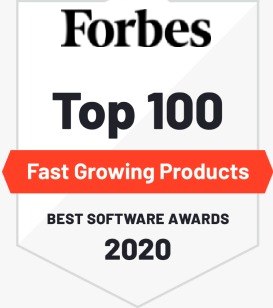Section 1 : Introduction
|
|
Lecture 1 | Course Introduction + Exam Breakdown | 00:03:17 Duration |
|
|
Lecture 2 | INTRODUCTION TO BRAINMEASURES PROCTOR SYSTEM | |
|
|
Lecture 3 | Purpose Built Databases | 00:03:30 Duration |
Section 2 : Code & Slides Download
|
|
Lecture 1 | INTRODUCTION TO BRAINMEASURES PROCTOR SYSTEM |
Section 3 : Quick refresher on the basics
|
|
Lecture 1 | Types of data | 00:05:04 Duration |
|
|
Lecture 2 | Relational databases | 00:06:28 Duration |
|
|
Lecture 3 | Non-relational databases | 00:06:42 Duration |
Section 4 : Amazon RDS and Aurora
Section 5 : Amazon DynamoDB and DAX
|
|
Lecture 1 | DynamoDB overview | 00:03:18 Duration |
|
|
Lecture 2 | Working with DynamoDB - Hands on | 00:10:55 Duration |
|
|
Lecture 3 | DynamoDB basics | 00:06:59 Duration |
|
|
Lecture 4 | DynamoDB consistency | 00:04:34 Duration |
|
|
Lecture 5 | DynamoDB pricing model | |
|
|
Lecture 6 | DynamoDB throughput | 00:04:18 Duration |
|
|
Lecture 7 | Calculating capacity units | 00:04:19 Duration |
|
|
Lecture 8 | DynamoDB burst capacity and adaptive capacity | 00:06:19 Duration |
|
|
Lecture 9 | DynamoDB local secondary index (LSI) | 00:04:28 Duration |
|
|
Lecture 10 | DynamoDB global secondary index (GSI) | 00:02:58 Duration |
|
|
Lecture 11 | Choosing between LSI and GSI | 00:02:59 Duration |
|
|
Lecture 12 | Simple design patterns with DynamoDB | 00:03:42 Duration |
|
|
Lecture 13 | Errors and exceptions in DynamoDB | 00:02:59 Duration |
|
|
Lecture 14 | DynamoDB partitions | 00:04:31 Duration |
|
|
Lecture 15 | DynamoDB partition behavior example | 00:05:30 Duration |
|
|
Lecture 16 | Scaling options in DynamoDB | 00:04:08 Duration |
|
|
Lecture 17 | DynamoDB scaling and partition behavior | 00:03:46 Duration |
|
|
Lecture 18 | DynamoDB best practices | 00:04:06 Duration |
|
|
Lecture 19 | DynamoDB best practices (contd | 00:04:28 Duration |
|
|
Lecture 20 | Large object patterns and table operations | 00:05:01 Duration |
|
|
Lecture 21 | DynamoDB accelerator (DAX) | 00:02:46 Duration |
|
|
Lecture 22 | DAX architecture | 00:01:59 Duration |
|
|
Lecture 23 | DAX operations | 00:03:37 Duration |
|
|
Lecture 24 | Implementing DAX - Hands on | |
|
|
Lecture 25 | DynamoDB backup and restore | 00:07:09 Duration |
|
|
Lecture 26 | DynamoDb backup and restore - Hands on | 00:03:03 Duration |
|
|
Lecture 27 | Continuous backup with PITR | 00:02:09 Duration |
|
|
Lecture 28 | Continuous backup with PITR - Hands on | 00:04:08 Duration |
|
|
Lecture 29 | DynamoDB encryption | 00:03:37 Duration |
|
|
Lecture 30 | DynamoDB streams | 00:03:21 Duration |
|
|
Lecture 31 | DynamoDB TTL | 00:02:15 Duration |
|
|
Lecture 32 | DynamoDB TTL - Hands on | 00:04:32 Duration |
|
|
Lecture 33 | TTL use cases | 00:01:12 Duration |
|
|
Lecture 34 | DynamoDB global tables | 00:05:00 Duration |
|
|
Lecture 35 | DynamoDB global tables - Hands on | |
|
|
Lecture 36 | Fine-grained access control and Web-identity federation in DynamoDB | 00:05:40 Duration |
|
|
Lecture 37 | CloudWatch contributor insights for DynamoDB | 00:01:10 Duration |
Section 6 : Amazon Redshift
Section 7 : Amazon ElastiCache
|
|
Lecture 1 | ElastiCache overview | 00:04:40 Duration |
|
|
Lecture 2 | Caching strategies | 00:04:48 Duration |
|
|
Lecture 3 | Redis architecture and Multi-AZ auto-failover | 00:04:46 Duration |
|
|
Lecture 4 | Redis backup and restore | 00:01:41 Duration |
|
|
Lecture 5 | Redis scaling and replication | 00:05:55 Duration |
|
|
Lecture 6 | Creating a Redis cluster - Hands on | 00:04:45 Duration |
|
|
Lecture 7 | Redis global datastore | 00:02:42 Duration |
|
|
Lecture 8 | Redis - Good things to know | 00:01:30 Duration |
|
|
Lecture 9 | Redis best practices | 00:02:02 Duration |
|
|
Lecture 10 | Redis use cases | 00:02:40 Duration |
|
|
Lecture 11 | Memcached overview | 00:01:34 Duration |
|
|
Lecture 12 | Memcached architecture | 00:01:04 Duration |
|
|
Lecture 13 | Memcached auto discovery | 00:01:30 Duration |
|
|
Lecture 14 | Memcached scaling | 00:01:41 Duration |
|
|
Lecture 15 | Creating a Memcached cluster - Hands on | 00:04:09 Duration |
|
|
Lecture 16 | Choosing between Redis and Memcached | 00:02:15 Duration |
|
|
Lecture 17 | ElastiCache security | 00:03:59 Duration |
|
|
Lecture 18 | ElastiCache logging and monitoring | 00:01:13 Duration |
|
|
Lecture 19 | ElastiCache pricing | 00:01:05 Duration |
Section 8 : Amazon DocumentDB (with MongoDB compatibility)
|
|
Lecture 1 | DocumentDB overview | 00:01:50 Duration |
|
|
Lecture 2 | What and why about document databases | 00:02:22 Duration |
|
|
Lecture 3 | DocumentDB architecture | 00:04:25 Duration |
|
|
Lecture 4 | DocumentDB backup and restore | 00:02:20 Duration |
|
|
Lecture 5 | DocumentDB scaling | 00:01:29 Duration |
|
|
Lecture 6 | DocumentDB security | 00:01:52 Duration |
|
|
Lecture 7 | DocumentDB pricing | 00:01:10 Duration |
|
|
Lecture 8 | DocumentDB monitoring | 00:02:41 Duration |
|
|
Lecture 9 | DocumentDB performance management | 00:00:45 Duration |
|
|
Lecture 10 | Creating a DocumentDB cluster - Hands on | 00:04:54 Duration |
Section 9 : Amazon Neptune
|
|
Lecture 1 | Neptune overview | 00:05:09 Duration |
|
|
Lecture 2 | Neptune architecture | 00:03:15 Duration |
|
|
Lecture 3 | Creating a Neptune cluster - Hands on | 00:12:44 Duration |
|
|
Lecture 4 | Bulk loading graph data into Neptune | 00:01:56 Duration |
|
|
Lecture 5 | Bulk loading graph data into Neptune from S3 - Hands on | 00:14:11 Duration |
|
|
Lecture 6 | Neptune Workbench | 00:00:58 Duration |
|
|
Lecture 7 | Querying Neptune via Jupyter Notebooks - Hands on | 00:04:44 Duration |
|
|
Lecture 8 | Neptune replication and high availability | 00:01:48 Duration |
|
|
Lecture 9 | Neptune backup and restore | 00:02:22 Duration |
|
|
Lecture 10 | Neptune scaling | 00:00:50 Duration |
|
|
Lecture 11 | Database cloning in Neptune | 00:01:34 Duration |
|
|
Lecture 12 | Neptune security | 00:02:17 Duration |
|
|
Lecture 13 | Neptune monitoring | 00:01:29 Duration |
|
|
Lecture 14 | Query queuing in Neptune | 00:01:17 Duration |
|
|
Lecture 15 | Neptune service errors | 00:01:30 Duration |
|
|
Lecture 16 | SPARQL federated query | 00:01:26 Duration |
|
|
Lecture 17 | Neptune streams | 00:01:30 Duration |
|
|
Lecture 18 | Neptune pricing | 00:01:12 Duration |
Section 10 : Amazon Elasticsearch Service
|
|
Lecture 1 | Amazon Elasticsearch Service overview | 00:02:40 Duration |
|
|
Lecture 2 | ElasticSearch Service patterns | 00:02:19 Duration |
|
|
Lecture 3 | Elasticsearch Service - Multi-AZ | 00:01:27 Duration |
|
|
Lecture 4 | Logging options in Elasticsearch Service | 00:00:31 Duration |
|
|
Lecture 5 | ElasticSearch Service pricing | 00:01:22 Duration |
|
|
Lecture 6 | ElasticSearch Service - Hands on | 00:03:52 Duration |
Section 11 : Amazon Timestream
|
|
Lecture 1 | Timestream overview | 00:04:24 Duration |
|
|
Lecture 2 | Timestream pricing | 00:01:16 Duration |
Section 12 : Amazon QLDB
|
|
Lecture 1 | QLDB overview | 00:02:10 Duration |
|
|
Lecture 2 | QLDB architecture | 00:03:16 Duration |
|
|
Lecture 3 | QLDB views | 00:01:53 Duration |
|
|
Lecture 4 | Working with QLDB | 00:02:02 Duration |
|
|
Lecture 5 | Data verification in QLDB | 00:01:55 Duration |
|
|
Lecture 6 | Creating a QLDB ledger - Hands on | 00:12:15 Duration |
|
|
Lecture 7 | Data verification in QLDB - Hands on | 00:03:17 Duration |
|
|
Lecture 8 | QLDB backup and restore (an alternative) | 00:01:07 Duration |
|
|
Lecture 9 | QLDB streams | 00:00:51 Duration |
|
|
Lecture 10 | QLDB high availability, durability and an alternative to CRR | 00:01:20 Duration |
|
|
Lecture 11 | QLDB security | 00:01:25 Duration |
|
|
Lecture 12 | QLDB monitoring | 00:00:52 Duration |
|
|
Lecture 13 | QLDB pricing | 00:00:43 Duration |
Section 13 : Amazon Keyspaces (for Apache Cassandra)
|
|
Lecture 1 | Keyspaces overview | 00:03:15 Duration |
|
|
Lecture 2 | Migrating from Cassandra to Keyspaces | 00:01:01 Duration |
|
|
Lecture 3 | Read and write consistency in Keyspaces | 00:01:00 Duration |
|
|
Lecture 4 | Keyspaces pricing | 00:03:13 Duration |
|
|
Lecture 5 | Working with Keyspaces - Hands on | 00:05:28 Duration |
Section 14 : Comparing AWS Databases
|
|
Lecture 1 | Comparison of AWS Databases | 00:05:38 Duration |
Section 15 : Database Migration, DMS and SCT
|
|
Lecture 1 | Database migration overview | 00:05:27 Duration |
|
|
Lecture 2 | DMS sources and targets | 00:02:10 Duration |
|
|
Lecture 3 | DMS architecture and overview | 00:03:44 Duration |
|
|
Lecture 4 | Migration with DMS in action - Hands on | 00:11:55 Duration |
|
|
Lecture 5 | SCT overview | 00:03:18 Duration |
|
|
Lecture 6 | Workload Qualification Framework (WQF) | 00:01:16 Duration |
|
|
Lecture 7 | DMS tasks and task assessment reports | 00:01:57 Duration |
|
|
Lecture 8 | DMS migration types | 00:01:18 Duration |
|
|
Lecture 9 | DMS - Good things to know | 00:01:18 Duration |
|
|
Lecture 10 | Migrating large tables and LOBs with DMS | 00:05:13 Duration |
|
|
Lecture 11 | DW migration with SCT | 00:05:27 Duration |
|
|
Lecture 12 | Migration playbooks | 00:03:25 Duration |
|
|
Lecture 13 | DMS monitoring | 00:01:46 Duration |
|
|
Lecture 14 | DMS validation | 00:01:57 Duration |
|
|
Lecture 15 | DMS statistics and control tables | 00:03:18 Duration |
|
|
Lecture 16 | DMS security - IAM, encryption and networking | 00:05:18 Duration |
|
|
Lecture 17 | DMS pricing | 00:00:28 Duration |
|
|
Lecture 18 | DMS general best practices | 00:01:16 Duration |
|
|
Lecture 19 | DMS migration architectures to minimize downtime | 00:06:06 Duration |
|
|
Lecture 20 | Migrating large databases | 00:01:46 Duration |
|
|
Lecture 21 | Migrating to RDS databases | 00:08:25 Duration |
|
|
Lecture 22 | Migrating to Aurora | 00:06:01 Duration |
|
|
Lecture 23 | Migrating Redis workloads to ElastiCache | 00:04:14 Duration |
|
|
Lecture 24 | Migrating to DocumentDB | 00:06:34 Duration |
|
|
Lecture 25 | Streaming use cases for DMS | 00:03:45 Duration |
Section 16 : Monitoring, Logging and Encryption
|
|
Lecture 1 | Encryption and Snapshots | 00:03:27 Duration |
|
|
Lecture 2 | Database Logging | 00:05:26 Duration |
|
|
Lecture 3 | Secrets Manager | 00:01:20 Duration |
|
|
Lecture 4 | Active Directory with RDS Microsoft SQL Server | 00:02:19 Duration |
Section 17 : CloudFormation and Automation
Section 18 : VPC - Networking
|
|
Lecture 1 | VPC Section Structure | |
|
|
Lecture 2 | VPC, Subnets, IGW and NAT | 00:05:24 Duration |
|
|
Lecture 3 | NACL, SG, VPC Flow Logs | 00:04:36 Duration |
|
|
Lecture 4 | VPC Peering, Endpoints, VPN, DX | 00:05:50 Duration |
|
|
Lecture 5 | VPC Cheat Sheet & Closing Comments | 00:02:34 Duration |
|
|
Lecture 6 | Extra Bastion Hosts | 00:01:23 Duration |
Section 19 : Other Topics
|
|
Lecture 1 | AWS Lambda Architectures | 00:04:13 Duration |
|
|
Lecture 2 | Server Migration Service | 00:01:45 Duration |
|
|
Lecture 3 | EBS-optimized instances | 00:02:29 Duration |
|
|
Lecture 4 | Transferring large amount of data into AWS | 00:01:33 Duration |
|
|
Lecture 5 | Disaster Recovery | 00:11:30 Duration |
Section 20 : Exam preparation
|
|
Lecture 1 | Exam Guide & Sample Questions | 00:02:19 Duration |
|
|
Lecture 2 | Sample question 1 | 00:03:59 Duration |
|
|
Lecture 3 | Sample question 2 | 00:03:46 Duration |
|
|
Lecture 4 | Sample question 3 | 00:03:26 Duration |
|
|
Lecture 5 | Sample question 4 | 00:02:21 Duration |
|
|
Lecture 6 | Sample question 5 | 00:03:17 Duration |
|
|
Lecture 7 | Sample question 6 | 00:02:27 Duration |
|
|
Lecture 8 | Sample question 7 | 00:04:21 Duration |
|
|
Lecture 9 | Sample question 8 | 00:03:37 Duration |
|
|
Lecture 10 | Sample question 9 | 00:05:19 Duration |
|
|
Lecture 11 | Sample question 10 | 00:04:16 Duration |
|
|
Lecture 12 | Exam Strategy How to tackle exam questions | 00:01:03 Duration |
|
|
Lecture 13 | Additional Resources | 00:01:09 Duration |
Section 21 : Congratulations
|
|
Lecture 1 | Congratulations & Next Steps | 00:00:58 Duration |


